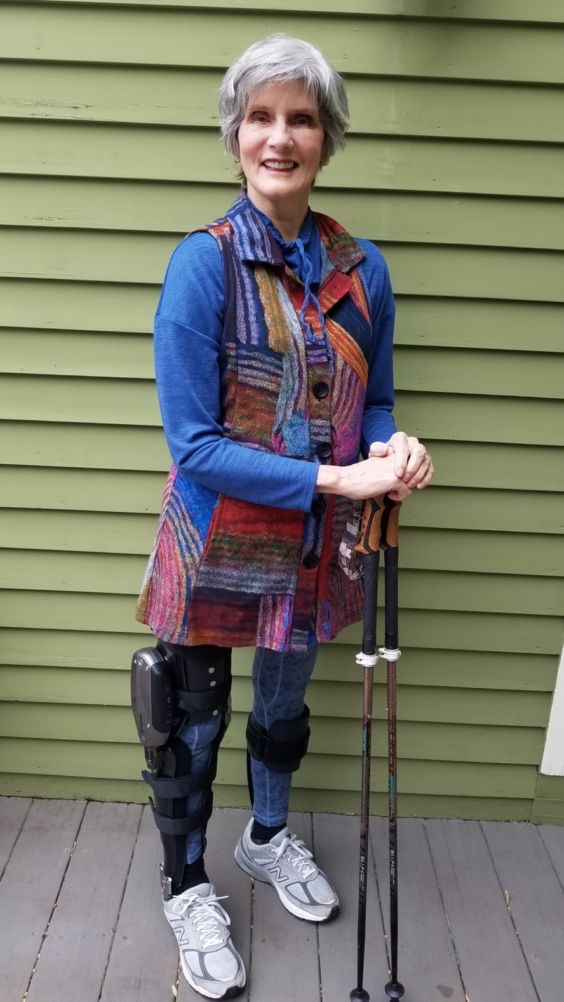Stumble control technology reduces falls by 80 percent
by Kathy Senecal, New England chapter co-leader

It can be difficult to find the right adaptive equipment we need to help us navigate the progression of FSHD. My search to stay mobile for as long as possible has led me to the C-Brace.
The Ottobock C-Brace is a long leg brace that uses microprocessor technology to enable the wearer to stand and walk more easily. An integrated sensor system evaluates the stance and swing phase 100 times per second, which the microprocessor uses to control a hydraulic unit.
The brace is individually fitted to each user, and support can be adjusted up or down over the course of time according to your physical needs. The brace responds to your gait dynamically and in real time. Incorporated into this technology is stumble control. Medicare has started covering this brace under strict parameters and documentation, in large part due to a clinical trial that demonstrated dramatic reductions in falls with individuals wearing this device. Also, once the Ottobock Cockpit app is loaded onto your phone, you can access different modes, such as bicycling or adding greater or less support.
Certain criteria must be met to ensure you are a proper candidate for this brace. To be confirmed, there are multiple steps involved prior to receiving the brace. This, in part, includes muscle testing, a trial with C-Brace trial braces, casting, and fittings. After delivery of the brace, physical therapy will assist you with gait training, ramps, steps, uneven ground, etc.
Prior to the C-Brace, I struggled to walk short distances, relying heavily on a rollator. When the brace was delivered, I wore it out of the clinic, and my husband and I immediately enjoyed a quarter-mile walk. It fits like a glove, is wonderfully comfortable, and has given me the freedom and functionality to walk long distances with confidence and ease.
At the time of this writing, I have been wearing the C-Brace for six months, and every day look forward to donning the brace and starting my day. Energy level dictates whether I use the rollator or walking poles. We are hopeful insurance will be approving a second C-Brace, and I will become a bilateral user.
As research and clinical trials continue moving forward, exploring the C-Brace may be a helpful option for you to continue managing disease progression.


Hi Kathy my name is Paul stoll I have fshd also.im trying to get the c brace but its been denied twice do you know how i can go about getting this approved my email is hauppaugecar@optimum.net phone 6317864146 thank you Paul
Hello,
I am a PT whose father suffers from severe (R)LE weakness due to a spinal syrinx. His leg has become progressively weaker over the past decade leaving him essentially a hemiplegic. He has become a tremendous fall risk and his quality of life has diminished tremendously. He is under the care of a neurologist but he has very little to offer at this point. We are desperate to give him back his dignity and as much self- sufficiency as possible. I would be grateful for any information you might share that would help me navigate a trial of this brace for my dad.